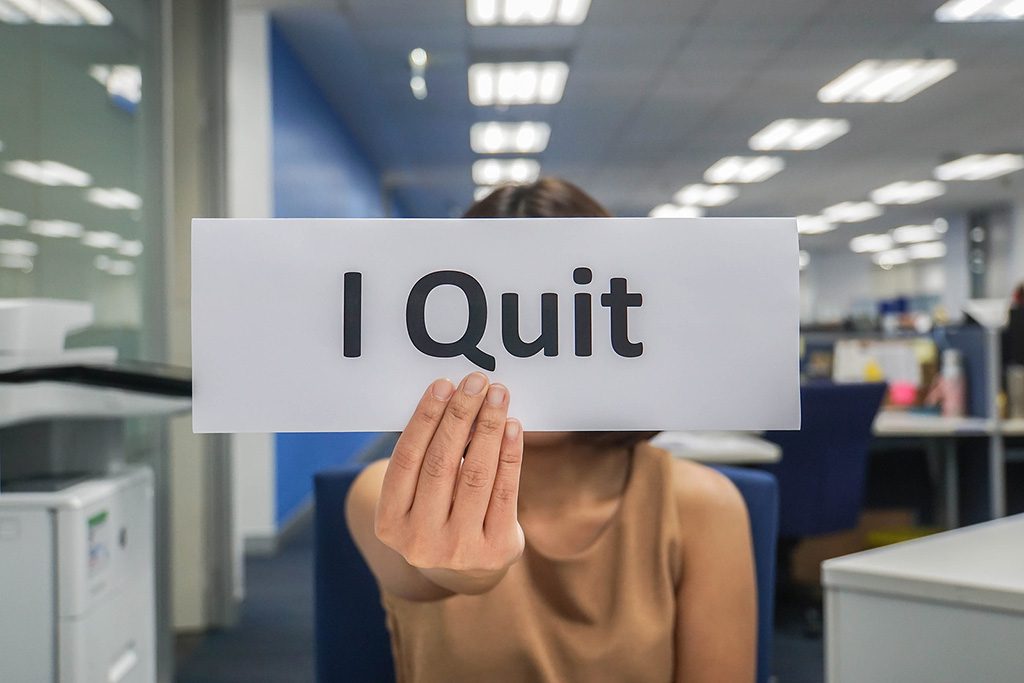For the first time in my career, the number one problem in business that I consistently hear from organizations is the same, regardless of the industry or size of the company: it’s more difficult than ever to find and retain talented employees.
They seem to be the rarest aspect in business today: the employee who comes in early every day, is willing to stay late, and goes above and beyond what they’re asked to do.
- In other words, the team member with total commitment to the organization’s success.
These employees bring fresh ideas to their role that help them grow within the organization and improve the overall employee experience for everyone else.
There has always been an excellent reason for organizations to work to prevent employee turnover. In fact, in my earliest books from two decades ago, I wrote that employee churn was the most significant overlooked expense for any organization. Employee turnover is an expense of significant dollars for every company. Perhaps even more importantly, there are also costs on employee morale and productivity.
According to Gallup’s 2013 State of the American Workplace, employee turnover expenditures are more than $30 billion a year. Note — this study was conducted eight years ago! As turnover is a key indicator of employee satisfaction, it’s obvious that this is much more impactful to you and your organization now than ever before.
The term for this current challenge in finding and keeping employees is the “Great Resignation.” That phrase was coined by Texas A&M associate professor of management, Anthony Klotz (as reported by Time). The numbers bear out his assertion: — in August alone, 892,000 people quit hospitality jobs, and 721,000 left retail employment.
- So why are so many of these great employees resigning? What are the primary reasons cited for people quitting their jobs?
The answers — and there are several — might not be what you expect. For example, the data proves it’s not the expanded unemployment insurance. (I admit I initially thought that issue was an essential driver of the problem — but the evidence shows it was not a significant factor. More people are leaving their current jobs now than those who quit before the end of the expanded benefits program concluded in September.)
Every organization — regardless of size — must learn that the employee experience isn’t merely about salaries, benefits, and working conditions. It’s most important about an organization’s culture — how people are treated daily within their company walls.
And the employee experience is not always about the employee. It’s also tied to customer satisfaction. It means you must focus on creating an outstanding employee-customer relationship, to ensure that both sides of the company coin (both employees and customers) are satisfied with their product or service.
Here are the three primary reasons employees quit:
- Poor leadership. We’ve said for decades that “customers buy from those they know, like, and trust.” Guess what? The same thing is true for our internal customers. Our employees must know what our organization stands for…they must like the people they work for and with…and they must trust the organization to have their best interests at heart. In today’s world, you must compete for employees with the same passion and precision as you strive for customer acquisition and retention.
- Unfair or poorly managed employee incentives and benefits. Are you confident that your employee perks are in line with what the employee values most? How do you know? If these benefits aren’t congruent with what your employees desire, it can make them feel underappreciated by their company — which can lead to a desire for career advancement elsewhere.
- Finally, employee recognition is another area where employee experience can be lacking. How do you recognize good performance? When I first started in the job market, “employee recognition” was that you got to keep your job and collect a paycheck! Yet, that standard isn’t even “table stakes” anymore…although many employers seem to be operating under the erroneous assumption that it’s good enough in today’s world.
The employee experience is just as necessary as the customer experience, and it’s time for companies to start focusing on what employees really want!
- First, come up with an example of a company that gets employee engagement right. What are some ways that they are going out of their way to improve their employee’s experience?
- Second, how can you adopt or adapt their approach to your business? According to Professor Klotz, we have an opportunity to communicate with our employees and say, “Within the constraints of our business, let’s obviously raise wages and benefits — but let’s also think about flexibility more innovatively.”
- Last, what can you do right now to start this employee experience movement within your organization?
Remember, employee engagement is a process that requires time and commitment. If immediate actions need to be taken in your company, try shifting the employee mindset by using employee surveys or forums.
According to Professor Klotz, “People want a voice – they want to be heard. This is a great way for employees and employers to meet in the middle.”
Our work on the Ultimate Customer Experience® helps organizations create the best for both your internal and external customers. We would love to talk about how we can work with you – as we have with other major organizations – to deliver this type of experience for your team members and those who purchase your products and services.
For more info, simply go to: https://UltimateCustomerExperience.com



